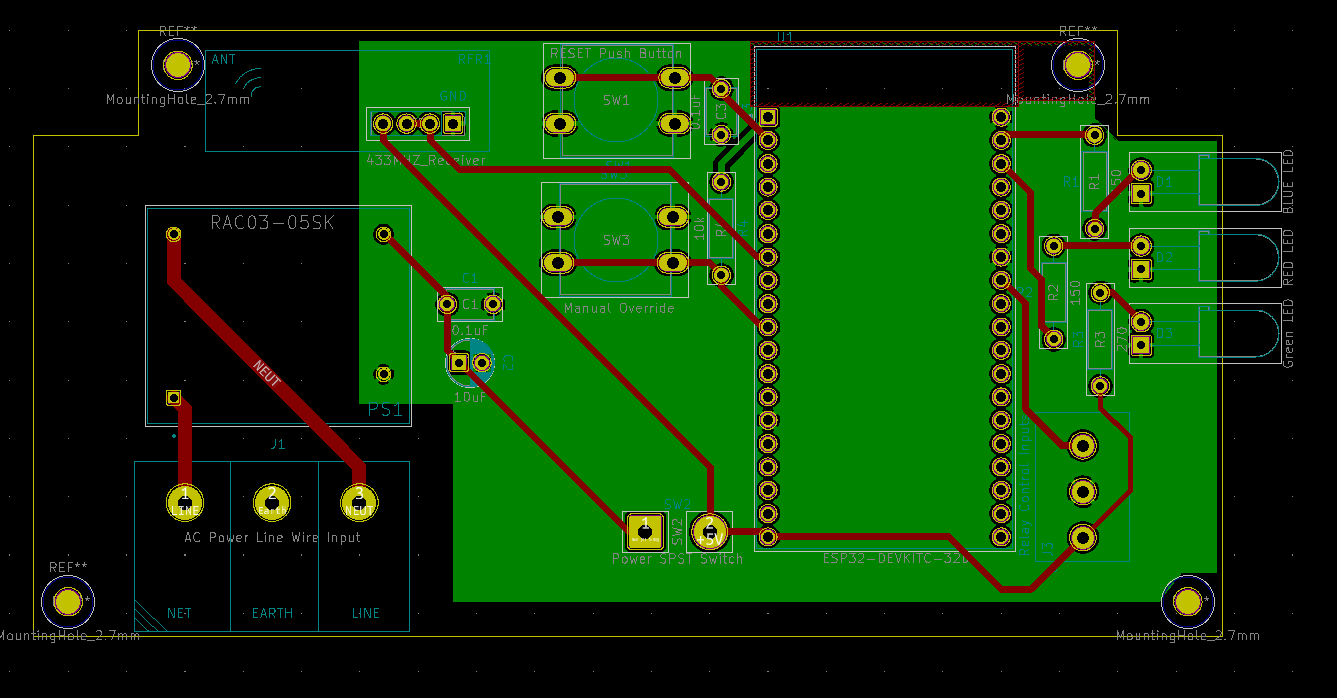I am designing a circuit board that will sit in an enclosure that will eventually sit in a garage to control a dust collector via an external relay. I have designed the PCB and I just wanted to make sure I have considered all the safety concerns when it comes to AC to PCB board that humans interact with using push buttons.
PLEASE PLEASE BE AS CRITICAL AS YOU COULD!!
Some info:
- AC input will only need to handle a max of 3 Amps (Trace Width is currently 60 mils external)
- The MCU is an ESP32 DevKitC module
- The 433MHz Receiver is a basic breakout board (433Mhz Rf Transmitter and Receiver Module Board Link Kit)
- AC line inputs are coming in with a wire-screw to board connector.
- The AC/DC converter is a RAC03-05SK which converts from AC (85VAC-265VAC)
Concerns:
- How do I protect our kind human when they are interacting with the module (say pressing a button) and to ensure no AC wondering current just flow through them. I have access to the Earth but I am unsure what I should do with it or where to connect it.
- Is my DC ground bottom pour good enough?
- Since this device is going to be in a garage I am sure dust will be involved. Is there anything that I need to be worried about when designing for a place that has pollution and if so what kind of worry should I have?
- Do I need any fuses?
I know this might be a very simple design but I just become concerned when it involves AC. DC I am not too worried. Any suggestions, recommendations and any critiques are much much MUCH appreciated!
Thank you so much in advance.
Here is a picture of the PCB design with the ground pours shown:

Here is a picture of the PCB design without the ground pours shown:

EDITs for anyone that might find this helpful! Please review the answers for details:
Removed the AC part of the circuit and just moved it to a wallwart which is much safer and less liability! Thanks @Kyle B for your help!


